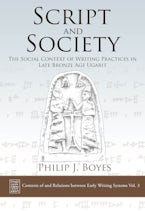Tell Ahmar – also known as Masuwari, Til Barsib and Kar-Shalmaneser in the first millennium BCE – was first inhabited in the sixth millennium during the Ubaid period, and progressively developed to become a regional centre, and in the eighth and seventh centuries, a provincial capital of the Assyrian empire. Remains from the third millennium (a temple and a funerary complex), the second millennium (an administrative complex and well-preserved houses) and the first millennium (an Assyrian palace and elite residences) are particularly impressive.
The book offers an archaeological and historical synthesis of the results obtained by the excavations of François Thureau-Dangin (1929–1931) and by the more recent excavations of the universities of Melbourne (1988–1999) and Liège (2000–2010). It presents a comprehensive and diachronic view of the evolution of the site, which, by its position on the Euphrates at an important crossroads of ancient communication routes, was at the heart of a game of cultural and political interference between Mesopotamia, the Mediterranean world and Asia Minor.
Foreword
Acknowledgements
Abbreviations
Prologue: The site and its exploration
Part One: Tell Ahmar from its origins to the end of the second millennium: East meets west on the Euphrates
1. Tell Ahmar and the origins of urban life
2. Tell Ahmar in the second millennium
Part Two: Tell Ahmar between Luwians, Aramaeans and Assyrians: Birth of a regional capital
3. Tell Ahmar/Masuwari/Til Barsib and the Aramaean tribe of Adini (c. 1200–856)
4. From Til Barsib to Kar-Shalmaneser – The beginnings of Assyrian domination (c. 856–750)
Part Three: Tell Ahmar in the Assyrian empire: birth of an imperial koine
5. Ashur imposes its mark – The palace and the high dignitaries
6. Urbanism and residential buildings
7. Images in everyday life
8. People and crafts
Epilogue: The end of Tell Ahmar
Fieldwork at Tell Ahmar — Selected bibliography












